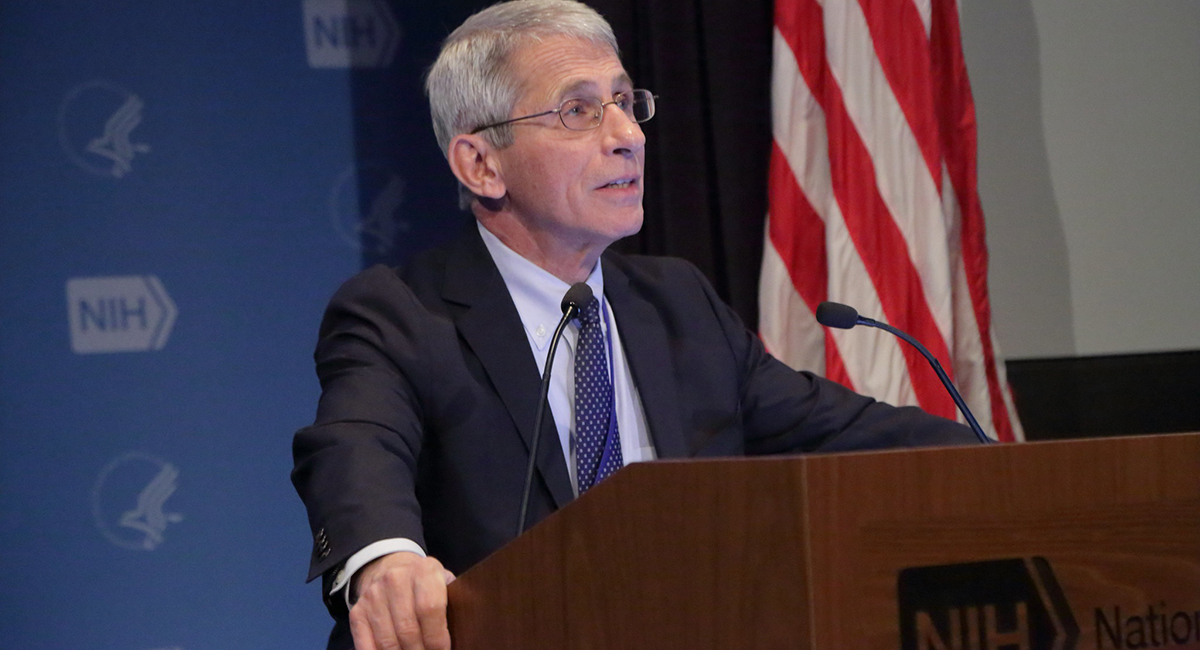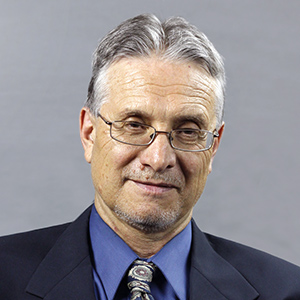Like Sollozzo in “The Godfather,” Anthony Fauci’s business is drugs. The NIAID boss bags royalties from drug manufacturers but doesn’t tell the patients who participate in his risky drug trials.
“My financial disclosure is public knowledge and has been so for the last 37 years or so the last 35 years. All you have to do is ask for it. You’re so misinformed, all you have to do is ask for it.”
That was Dr. Anthony Fauci last month, in response to Senator Roger Marshall (R-Kan.), a medical doctor. As Adam Andrezejewski of OpentheBooks.com learned, the “public knowledge” part is a stretch.
Fauci’s 2021 salary, and what he earned in royalties, had not been made public. As many as 1,000 National Institutes of Health scientists receive royalties, and each payment is “a potential conflict of interest.” So it was of some concern that “NIH admits it holds approximately 1,200 pages relating to Fauci’s financial information and conflict of interest disclosures.”
As it turns out, this sort of secrecy is standard practice.
According to a 2005 British Medical Journal report now posted on an NIH website, patients who took part in NIH clinical trials “had no idea that scientists at the institutes received $8.9m (£4.8m; €6.8m) in royalty payments and might benefit financially for the use of their discoveries by pharmaceutical companies and device makers.”
Nearly 1,000 NIH researchers received annual royalty payments and “NIH researchers spent millions of taxpayers’ dollars studying the treatments that they had developed that were licensed to drug companies.” If they had known about the researchers’ financial interests, “patients might have thought differently about the risks of trial treatment.”
The two leading researchers were Anthony Fauci, head of the National Institute of Allergy and Infectious Diseases and his deputy Clifford Lane. They received payments for the development of interleukin-2 as a treatment for HIV/AIDS. Dr. Lane told the BMJ that the payment was part of his federal compensation and “the government patented the development and shared the payments it received with the inventors.”
Fauci claimed that as a government employee “he was required by law to put his name on the patent for the development of interleukin 2 and was also required by law to receive part of the payment the government received for use of the patent.” Fauci also said it was “inappropriate to receive payment and donated the entire amount to charity,” and like Lane, he claimed to be “concerned about an apparent conflict of interest for some time.” (Emphasis added.)
The NIH had “no plans to put information about payments to its researchers on its website” and “the BMJ would have to make a request via the Freedom of Information Act to find out royalty payments to individual researchers.” One of the few journalists to follow up was John Solomon, in a January 11, 2005 report headlined, “Profit Motive Hidden from Patients.”
Fauci and Lane were “collecting royalties on an AIDS treatment they’re testing on patients using taxpayer money.” Both doctors “acknowledged they were unwilling to tell interleukin-2 patients about the royalties on consent forms until NIH developed its policy.” That policy had been in place since May of 2000 but not followed, so “hundreds, perhaps thousands, of patients in NIH experiments made decisions to participate in experiments that often carry risks without full knowledge about the researchers’ financial interests.”
The NIH did not implement the disclosure policy until 2009, “almost five years after HHS officials pledged to disclose such arrangements to patients.” So Fauci was indeed on the gravy train, and the NIAID-NIH bosses weren’t exactly up front about it. Taxpayers and unwitting participants in medical trials might dial back to Fauci’s first “treatment” for AIDS.
Fauci promoted trials of AZT (azidothymidine), marketed as Zidovudine. This DNA chain terminator was rejected for cancer treatment because of cytotoxicity, lethality to cells. In 1987, the FDA approved AZT at lightning speed, which disturbed molecular biologist Dr. Harvey Bialy, scientific editor of Biotechnology.
“I can’t see how this drug could be doing anything other than making people very sick,” said Dr. Bialy. On the contrary—AZT was making some people very rich. After FDA approval, Burroughs Wellcome stock went through the roof. At a price of $8,000 per patient per year, AZT was the most expensive drug ever marketed.
In her 1995 book, The Search for an AIDS Vaccine, Fauci’s wife Christine Grady said children and pregnant women were suitable subjects for drug trials and touted “the availability and effectiveness of AZT,” as a boon to research. As the couple had to know, it was anything but.
In 2012, the NIH named Christine Grady, a specialist in recruitment of human subjects, chief of the NIH bioethics department. Grady hasn’t disclosed whether the human subjects would have held back from drug trials if they knew the NIAID boss, her husband, got a piece of the action. The NIH inspector general explored that theme in a 2019 report revealingly titled “NIH Has Made Strides in Reviewing Financial Conflicts of Interest in Extramural Research, But Could Do More.”
Back in 2008, the NIH “could not provide an accurate count of FCOIs (financial conflicts of interest) from 2004-2006” and was aware of significant financial interests that existed among NIH researchers and how the FCOIs were managed. This raised, “serious concerns about NIH’s oversight of institutions and how these institutions were reporting and managing FCOIs.”
The report, the first inspector general effort on financial conflicts of interest since 2011, was “unable to verify if any of the reported FCOIs included foreign entities.” That left the question of unreported FCOIs on both foreign and domestic entities. As the OIG knew, those NIH researchers had already held back vital information the people had a right to know.
According to the NIH Office of Science Policy, gain-of-function research can “enhance the pathogenicity or transmissibility of potential pandemic pathogens,” and therefore raise “biosafety and biosecurity concerns.” Fauci apparently lied about funding such research at the Wuhan Institute of Virology, controlled by the Chinese Communist Party and unaccountable to American taxpayers.
In early 2020, Fauci opposed President Trump’s ban on travel from China. Fauci backed lockdowns and showed little if any sympathy for suffering Americans. Fauci backs vaccine mandates that now include children and infants. For those of the generation following World War II, that should bring back memories.
The scourge of the time was paralytic poliomyelitis, better known as polio. Jonas Salk developed an effective polio vaccine but instead of applying for a patent, which could have brought him millions in revenue, Salk dedicated his vaccine to all mankind. In similar style, Albert Sabin licensed his oral vaccine to manufacturers at no cost. Anthony Fauci and his Big Pharma pals are a different breed.
Fauci earned a medical degree in 1966 but in 1968, to avoid treating wounded American soldiers, he took a cushy “yellow beret” job with the NIH. Fauci’s bio shows no advanced degrees in molecular biology or biochemistry, yet he has headed NIAID since 1984. Despite colossal mistakes and repeated reversals, Fauci claims “I represent science.” For all but the willfully blind, he represents something else.
“It’s not personal, Sonny, it’s strictly business,” is reportedly Fauci’s favorite line from “The Godfather.” Like the mobster Virgil Sollozzo, Fauci’s business is drugs. The NIAID boss bags royalties from drug manufacturers but doesn’t tell the patients who participate in his dangerous drug trials. Unlike Sollozzo, Fauci does not need a man with powerful friends. The NIAID boss, 81, already has the NIH in his pocket, “like so many nickels and dimes.”
The NIAID budget of more than $6 billion gives Fauci power over research funding. Oppose Fauci and your funding will sleep with the fishes. With his wife heading bioethics at the NIH, Dr. Fauci also boasts a powerful consigliere. Whatever Dr. Fauci wants, dutiful wife Christine will tell him it’s the right thing to do. On the other hand, when politicians and journalists seek answers, NIH bosses follow the code of omertà.
The NIH, which “could do more” to disclose financial conflicts of interest, redacted Fauci’s 2019 disclosure, which had to be obtained through a Freedom of Information Act request. The NIH director at that time was Francis Collins, who also lied about funding gain-of-function research, and called on Fauci for a “quick, decisive takedown” of the scientists of the Great Barrington Declaration, respected epidemiologists from Harvard, Stanford, and Oxford universities. So when it came to Tony Fauci, Collins’ NIH discloses less.
Like Fauci’s claim to represent science, that insults Americans’ intelligence and should make them very angry—and inquisitive. Adam Andrezejewski of OpentheBooks is already there.
“Did Fauci’s early knowledge of the Covid-19 outbreak influence any of his financial trading?” he wonders. Anything in there about masks, test kits, vaccines, and such? And what, if anything, did Fauci make off the cytotoxic drug AZT? Did he tell the human subjects they were taking a DNA chain terminator?
Open the books. Open them wide. The people have a right to know.








